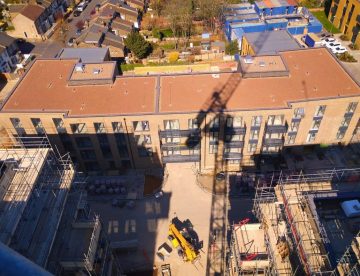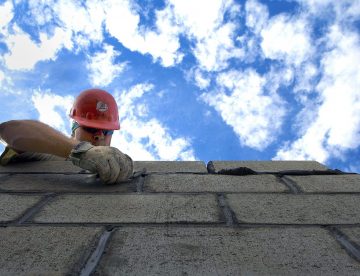
Schools and colleges have broken up and, aside from the unpredictable weather, this means lots of young people will now be nervously waiting for their exam results and preparing for the next stage of their life.
While some will know exactly what they want to do, others might still be considering the options. For anyone considering a career in construction but not knowing where to start, we’ve got three steps you could follow in this week’s blog.

Over the past few months, we’ve witnessed a race in the launch of Artificial Intelligence (AI) technology that has been trained to interact with humans in a conversational way.
Natural language models like Open AI’s ChatGPT and Google’s Bard can produce pieces of creative writing, translate copy, summarise lengthy texts, access vast amounts of data to answer queries and have a human-like conversation. Whilst experimenting with these technologies can be both useful and fun, this has got us wondering whether AI might soon be taking on other creative work such as designing a building (or perhaps it is already)? Take a look at what we found out in this week’s blog.
Over the past few weeks, we’ve been sharing what we know about some of the careers people can choose in construction. So far, we’ve looked at what it means to take up physical, on-site jobs like bricklaying and roofing but, while these are common and important roles, the sector offers a much broader range of possibilities than this.
In fact, construction is one of the biggest industries in the world and so there are literally hundreds of career pathways to choose from. For instance, there are Architects, CAD technicians, Quantity Surveyors, Site Engineers, Contracts Managers, Estimators, Construction Managers, BIM Coordinators, Commercial Managers, Health and Safety professionals, Environmental Consultants and a whole host of other back-office roles like accountancy, office management and digital marketing.
In this third and final part of our Careers in Construction series, we’re going to give a brief overview of five of these roles.

Earlier this month, we reported on how the construction industry in the UK will need over a quarter of a million extra workers by 2026, including 26,000 in Greater London and 24,600 across the East of England.
This is going to be a real challenge, not least because the numbers of young people looking to enter the sector are far below the numbers of older workers who are leaving their trade. One YouGov Omnibus survey found that only 3% of young people aged 18-24 had searched for a job in construction.
As schools and colleges across the country come to a close, it’s likely there are a great many young people who haven’t fully decided what to do next. To help, we thought we’d share what we know about some of the key construction trades and so the focus of today’s blog is roofing.

Between July and September this year, the number of vacancies in construction soared to around 43,000 *. That’s double the amount of unfilled jobs the sector saw this time last year and the highest level ever recorded in the 20 years since the data was first collected back in 2001!
While this (alongside other issues like the rising costs of materials) might seem to be cause for concern as we head into the winter, some industry and recruitment experts believe things may be about to change. Find out more, including news of current vacancies at Sheriff, in this week’s blog.

In case you missed it, Rishi Sunak presented the government’s Spring Budget yesterday. Unsurprisingly, the global pandemic and the billions of pounds of national expenditure that it has made necessary dominated what Sunak had to say. There were also several announcements which will undoubtedly have an impact on construction. To save you time, in this week’s blog, we’ve picked out some of the key measures.

When the Prime Minister announced England’s latest lockdown measures, there was at least some good news for construction workers. Exempting them from the general instruction to work from home wherever that is possible, the latest guidance states: “To help contain the virus, everyone who can work effectively from home must do so. Where people cannot…

We’re Looking to recruit a new Foreman/ Supervisor to with us on brickwork contracts across London and the surrounding area. All applicants must have significant previous experience and be able to provide CSCS, SSSTS cards and proof of identification. Immediate start is available with salary dependent on experience. Our Company Trading for 15 years, Sheriff…

